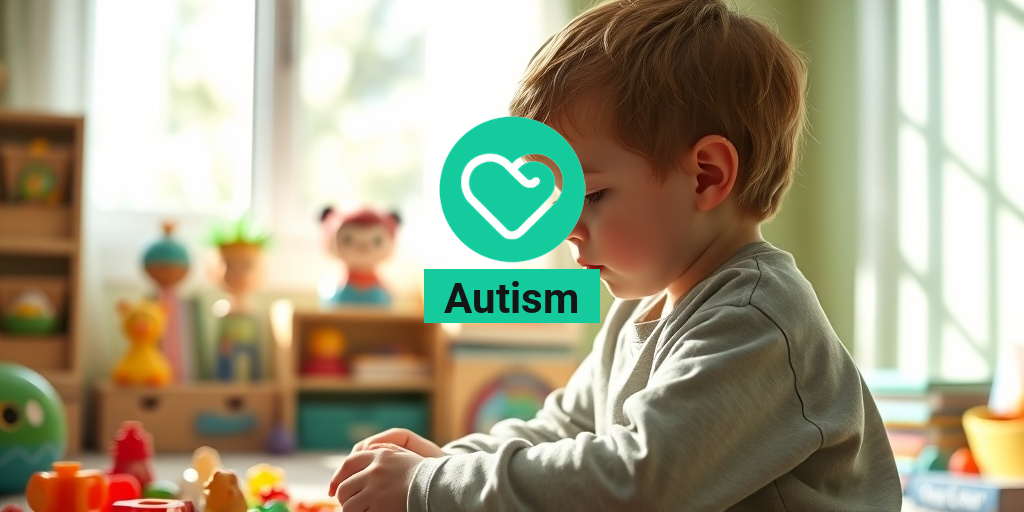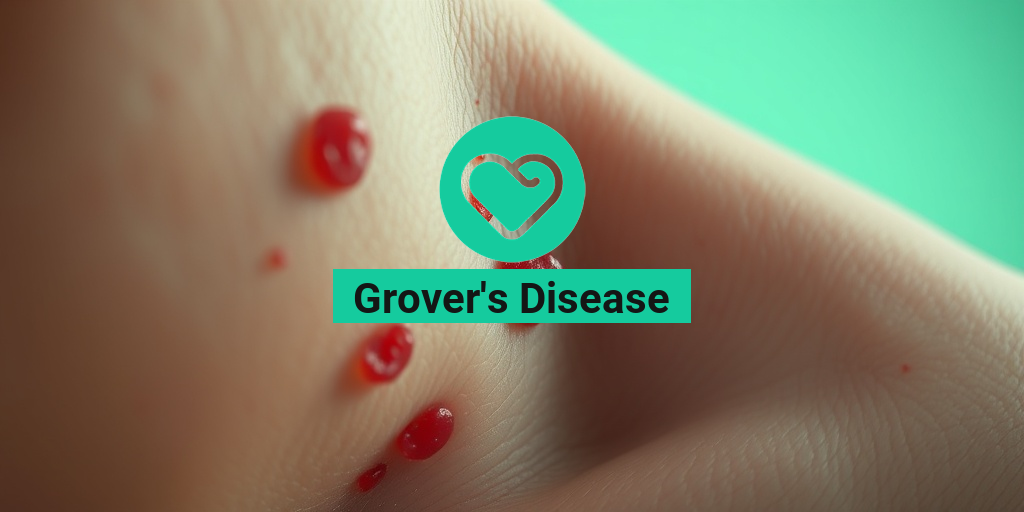What Is Arachnodactyly?
Arachnodactyly is a medical condition characterized by unusually long and slender fingers and toes. The term itself is derived from the Greek words “arachne,” meaning spider, and “dactylos,” meaning fingers. This condition can be a standalone feature or part of various genetic disorders, most notably Marfan syndrome. Individuals with arachnodactyly often have a distinctive appearance, which can lead to its identification during physical examinations.
Arachnodactyly is not a disease in itself but rather a symptom that can indicate underlying genetic conditions. It is essential to understand that while the appearance of long fingers and toes may be striking, the implications of arachnodactyly can vary significantly depending on the associated conditions.
Causes of Arachnodactyly
The primary cause of arachnodactyly is genetic mutations that affect connective tissue. These mutations can lead to conditions such as:
- Marfan Syndrome: A genetic disorder that affects the body’s connective tissue, leading to features like arachnodactyly, tall stature, and cardiovascular issues.
- Ehlers-Danlos Syndrome: A group of disorders affecting connective tissues, which can also present with arachnodactyly.
- Homocystinuria: A metabolic disorder that can lead to arachnodactyly among other symptoms.
In some cases, arachnodactyly can occur without any associated syndrome, making it an isolated finding. Genetic counseling may be beneficial for individuals and families affected by this condition.
Arachnodactyly Symptoms
The most noticeable symptom of arachnodactyly is the elongated fingers and toes. However, the condition can present with various other symptoms depending on the underlying cause. Here are some common symptoms associated with arachnodactyly:
Physical Characteristics
- Long Fingers and Toes: The hallmark of arachnodactyly is the disproportionate length of the fingers and toes, which may resemble spider legs.
- Hypermobile Joints: Many individuals with arachnodactyly experience increased flexibility in their joints, which can lead to joint pain or instability.
- High Arched Palate: Some may have a high-arched palate, which can affect speech and eating.
Associated Health Issues
Arachnodactyly can be associated with several health issues, particularly when linked to conditions like Marfan syndrome. These may include:
- Cardiovascular Problems: Individuals may be at risk for aortic dilation or dissection, which can be life-threatening.
- Vision Issues: Lens dislocation and other eye problems can occur, necessitating regular eye examinations.
- Skeletal Abnormalities: Some may experience scoliosis or other spinal deformities.
Diagnosis and Testing
Diagnosis of arachnodactyly typically involves a physical examination and a thorough medical history. Healthcare providers may look for specific signs, such as the Walker sign, Steinberg sign, and wrist sign, which are indicative of the condition. Genetic testing may also be recommended to identify any underlying genetic disorders.
If you suspect you or a loved one may have arachnodactyly, it’s essential to consult with a healthcare professional for a comprehensive evaluation. Resources like Yesil Health AI can provide evidence-based health answers and guidance on next steps.
In conclusion, while arachnodactyly may seem like a simple physical trait, it can have significant implications for an individual’s health and well-being. Understanding the symptoms and potential underlying causes is crucial for effective management and care. If you notice signs of arachnodactyly, don’t hesitate to seek professional advice! 🌟

Arachnodactyly Causes
Arachnodactyly, often referred to as “spider fingers,” is a condition characterized by long, slender fingers and toes. This distinctive feature can be a result of various underlying causes, ranging from genetic disorders to environmental factors. Understanding the causes of arachnodactyly is crucial for effective diagnosis and management.
Genetic Factors
One of the primary causes of arachnodactyly is genetic inheritance. This condition is often associated with several genetic disorders, including:
- Marfan Syndrome: A connective tissue disorder that affects the body’s structure, leading to features such as long limbs and fingers.
- Ehlers-Danlos Syndrome: Another connective tissue disorder that can result in hypermobility and elongated fingers.
- Homocystinuria: A metabolic disorder that can lead to arachnodactyly as part of its clinical presentation.
These genetic conditions are typically inherited in an autosomal dominant manner, meaning that only one copy of the mutated gene from an affected parent can cause the disorder in the offspring. Genetic counseling is often recommended for families with a history of these conditions.
Environmental Influences
While genetics play a significant role, environmental factors can also contribute to the development of arachnodactyly. These may include:
- Maternal Health: Conditions during pregnancy, such as diabetes or exposure to certain medications, can affect fetal development and lead to physical anomalies.
- Nutrition: A lack of essential nutrients during critical periods of development may influence the growth of bones and connective tissues.
It’s essential to consider both genetic and environmental factors when evaluating the causes of arachnodactyly, as they can interact in complex ways to influence an individual’s phenotype.
Arachnodactyly Diagnosis
Diagnosing arachnodactyly involves a comprehensive assessment that includes a detailed medical history, physical examination, and sometimes genetic testing. Early diagnosis is vital for managing any associated conditions effectively.
Clinical Evaluation
The first step in diagnosing arachnodactyly is a thorough clinical evaluation. Healthcare providers will look for characteristic features, including:
- Long Fingers and Toes: The most noticeable sign of arachnodactyly is the disproportionate length of the fingers and toes compared to the rest of the hand and foot.
- Positive Thumb Sign: This sign is observed when the thumb extends beyond the ulnar border of the hand when the fingers are folded down.
- Wrist Sign: The wrist sign is positive when the thumb and little finger can overlap when the hand is wrapped around the wrist.
These physical signs can help healthcare providers identify arachnodactyly during a routine examination.
Genetic Testing
If arachnodactyly is suspected to be part of a genetic syndrome, further evaluation through genetic testing may be recommended. This testing can confirm the presence of specific genetic mutations associated with conditions like Marfan syndrome or Ehlers-Danlos syndrome. Genetic counseling is also an essential component of the diagnostic process, providing families with information about inheritance patterns and potential health implications.
Imaging Studies
In some cases, imaging studies such as X-rays may be utilized to assess skeletal abnormalities associated with arachnodactyly. These studies can help identify any structural issues in the bones and joints that may require further management.
In summary, diagnosing arachnodactyly involves a combination of clinical evaluation, genetic testing, and imaging studies. Early recognition and diagnosis are crucial for managing any associated health risks and providing appropriate care. 🩺

Arachnodactyly Treatment Options
Arachnodactyly, characterized by long, slender fingers and toes, can be a feature of various genetic conditions. While the condition itself may not require treatment, associated symptoms or complications might necessitate medical intervention. Understanding the treatment options available can help individuals manage their symptoms effectively.
1. Monitoring and Diagnosis
Before any treatment can be initiated, a thorough diagnosis is essential. This often involves:
- Physical Examination: A healthcare provider will assess the individual’s hands and feet for characteristic features of arachnodactyly.
- Genetic Testing: If arachnodactyly is suspected to be part of a genetic syndrome, tests may be conducted to identify specific genetic mutations.
- Imaging Studies: X-rays or MRIs may be used to evaluate bone structure and any associated abnormalities.
2. Physical Therapy
For individuals experiencing discomfort or functional limitations due to arachnodactyly, physical therapy can be beneficial. A physical therapist can design a personalized exercise program to:
- Improve flexibility and strength in the fingers and hands.
- Enhance coordination and dexterity.
- Reduce pain and discomfort associated with joint issues.
3. Surgical Options
In some cases, surgical intervention may be necessary, especially if there are significant functional impairments or associated conditions. Surgical options can include:
- Corrective Surgery: Procedures to realign bones or joints may be performed to improve function.
- Joint Replacement: In severe cases, joint replacement surgery may be considered to alleviate pain and restore mobility.
4. Management of Associated Conditions
Arachnodactyly can be associated with various conditions, such as Marfan syndrome or Ehlers-Danlos syndrome. Treatment for these conditions may include:
- Medications: To manage symptoms like pain or cardiovascular issues.
- Regular Monitoring: Ongoing assessments to track the progression of associated conditions.
5. Lifestyle Modifications
Making certain lifestyle changes can also help manage symptoms of arachnodactyly. These may include:
- Ergonomic Tools: Using specially designed tools can reduce strain on the hands.
- Adaptive Devices: Devices that assist with daily tasks can enhance independence.
Arachnodactyly and Associated Conditions
Arachnodactyly is often not an isolated condition; it can be a symptom of various genetic disorders. Understanding these associated conditions is crucial for effective management and treatment.
1. Marfan Syndrome
One of the most well-known conditions associated with arachnodactyly is Marfan syndrome. This genetic disorder affects connective tissue and can lead to:
- Cardiovascular Issues: Such as aortic dilation or regurgitation.
- Skeletal Abnormalities: Including scoliosis and long limbs.
2. Ehlers-Danlos Syndrome
Ehlers-Danlos syndrome (EDS) is another condition that may present with arachnodactyly. EDS is characterized by:
- Hyperflexible Joints: Which can lead to frequent dislocations.
- Skin Elasticity: Skin may be more fragile and prone to bruising.
3. Other Genetic Disorders
Arachnodactyly can also be seen in other genetic disorders, such as:
- Homocystinuria: A metabolic disorder that can lead to developmental delays and cardiovascular issues.
- Stickler Syndrome: A condition that affects connective tissue and can lead to vision and hearing problems.
4. Importance of Genetic Counseling
For individuals diagnosed with arachnodactyly, genetic counseling can provide valuable insights. A genetic counselor can help:
- Explain the implications of the diagnosis.
- Discuss potential risks for family members.
- Provide information on available support resources.
Understanding the relationship between arachnodactyly and its associated conditions is vital for comprehensive care. Early diagnosis and intervention can significantly improve quality of life for those affected. 🌟

Arachnodactyly Management Strategies
Arachnodactyly, characterized by long, slender fingers and toes, can be associated with various genetic conditions, including Marfan syndrome and Ehlers-Danlos syndrome. Managing this condition involves a multifaceted approach tailored to the individual’s needs. Here are some effective management strategies:
1. Regular Monitoring and Assessment
Regular check-ups with healthcare professionals are crucial for individuals with arachnodactyly. This includes:
- Genetic Counseling: Understanding the genetic basis of arachnodactyly can help in managing associated risks.
- Physical Examinations: Routine assessments can help monitor any changes in the condition.
- Imaging Tests: Radiological evaluations may be necessary to assess skeletal abnormalities.
2. Physical Therapy and Occupational Therapy
Physical and occupational therapy can significantly improve the quality of life for individuals with arachnodactyly. These therapies focus on:
- Strengthening Exercises: Targeted exercises can enhance muscle strength and coordination.
- Adaptive Techniques: Therapists can teach strategies to perform daily activities more easily.
- Joint Protection: Learning how to protect joints can prevent injuries and reduce pain.
3. Surgical Interventions
In some cases, surgical options may be considered, especially if there are significant functional impairments or cosmetic concerns. Surgical strategies may include:
- Corrective Surgery: Procedures to correct skeletal deformities can improve hand and foot function.
- Joint Stabilization: Surgery may be necessary to stabilize hypermobile joints.
4. Pain Management
Chronic pain can be a significant issue for individuals with arachnodactyly. Effective pain management strategies include:
- Medications: Over-the-counter pain relievers or prescribed medications can help manage discomfort.
- Alternative Therapies: Techniques such as acupuncture or massage therapy may provide relief.
5. Lifestyle Modifications
Making certain lifestyle changes can also aid in managing arachnodactyly. Consider the following:
- Ergonomic Tools: Using tools designed to reduce strain on the hands can be beneficial.
- Regular Exercise: Engaging in low-impact activities can improve overall health and flexibility.
- Healthy Diet: A balanced diet rich in vitamins and minerals supports bone health.
Arachnodactyly Prognosis and Outlook
The prognosis for individuals with arachnodactyly largely depends on the underlying condition associated with the feature. Understanding the outlook can help individuals and families prepare for the future. Here’s what you need to know:
1. Variability in Prognosis
The prognosis for arachnodactyly can vary significantly based on several factors:
- Underlying Conditions: If arachnodactyly is part of a syndrome like Marfan syndrome, the prognosis may involve additional health considerations.
- Severity of Symptoms: Individuals with mild symptoms may have a better outlook compared to those with severe manifestations.
2. Life Expectancy
For many individuals with arachnodactyly, especially those with associated syndromes, life expectancy can be normal. However, it is essential to:
- Monitor Cardiovascular Health: Conditions like Marfan syndrome can increase the risk of heart problems, necessitating regular cardiovascular evaluations.
- Address Other Health Issues: Managing any additional health concerns can improve overall life quality and longevity.
3. Quality of Life Considerations
While arachnodactyly itself may not significantly impact life expectancy, it can affect quality of life. Factors influencing this include:
- Physical Functioning: The ability to perform daily tasks can be impacted, making therapy and adaptive strategies essential.
- Psychosocial Factors: Emotional support and counseling can help individuals cope with any social stigma or self-esteem issues.
4. Importance of Support Systems
Having a strong support system is vital for individuals with arachnodactyly. This includes:
- Family Support: Encouragement from family members can boost confidence and resilience.
- Community Resources: Engaging with support groups can provide valuable information and emotional support.
In conclusion, while arachnodactyly presents unique challenges, effective management strategies and a positive outlook can significantly enhance the quality of life for those affected. 🌟

Frequently Asked Questions about Arachnodactyly
What is Arachnodactyly?
Arachnodactyly is a medical condition characterized by long, slender fingers and toes. It is often associated with genetic disorders, such as Marfan syndrome, and can be identified through specific physical signs.
What are the common signs of Arachnodactyly?
- Walker sign: A test where the patient is asked to walk on their heels, which may reveal elongated fingers.
- Steinberg sign: This sign is positive when the thumb can be wrapped around the wrist, indicating long fingers.
- Wrist sign: If the fingers extend beyond the wrist when the hand is placed around it, this may indicate arachnodactyly.
How is Arachnodactyly diagnosed?
A diagnosis of arachnodactyly typically involves a physical examination by a healthcare professional. They may look for specific signs, such as the positive thumb sign or other related indicators. Imaging tests may also be used to assess any underlying conditions.
What conditions are associated with Arachnodactyly?
Arachnodactyly can be a feature of several genetic disorders, including:
- Marfan syndrome
- Ehlers-Danlos syndrome
- Homocystinuria
Can Arachnodactyly affect mobility?
While arachnodactyly itself does not typically affect mobility, associated conditions may lead to complications that could impact movement. It is essential to consult a healthcare provider for a comprehensive evaluation.
Is there a treatment for Arachnodactyly?
There is no specific treatment for arachnodactyly itself, but management of any underlying conditions is crucial. This may include physical therapy, regular monitoring, and lifestyle adjustments to ensure overall health.
What should I do if I suspect I have Arachnodactyly?
If you believe you may have arachnodactyly, it is advisable to consult a healthcare professional. They can provide a thorough assessment and recommend any necessary tests or treatments.
Are there any lifestyle changes recommended for individuals with Arachnodactyly?
Individuals with arachnodactyly should focus on maintaining a healthy lifestyle, which includes:
- Regular exercise to strengthen muscles and improve flexibility
- A balanced diet to support overall health
- Routine check-ups with healthcare providers to monitor any associated conditions
Can Arachnodactyly be inherited?
Yes, arachnodactyly can be inherited, especially if it is associated with genetic disorders. If there is a family history of conditions like Marfan syndrome, it is essential to discuss this with a healthcare provider.




